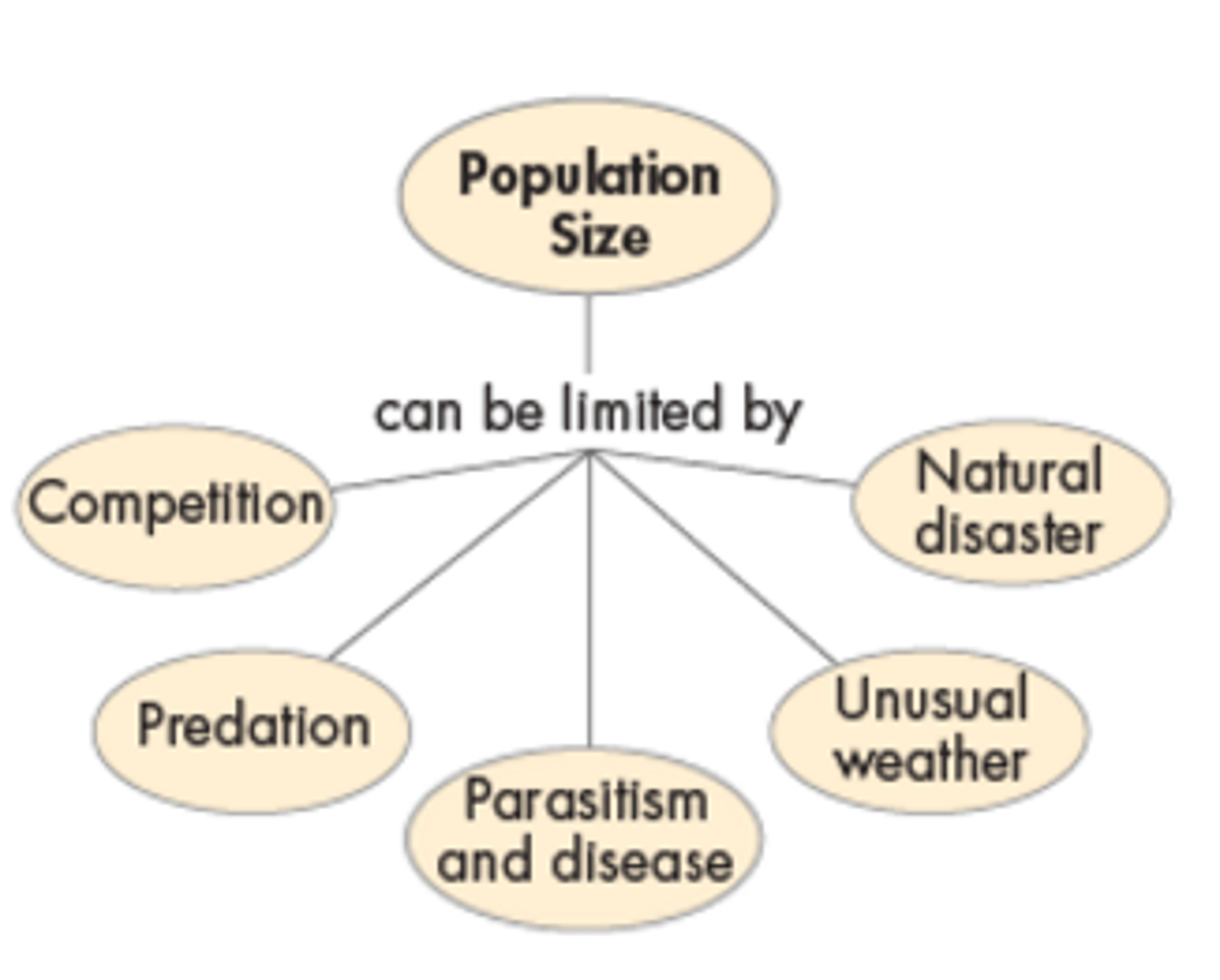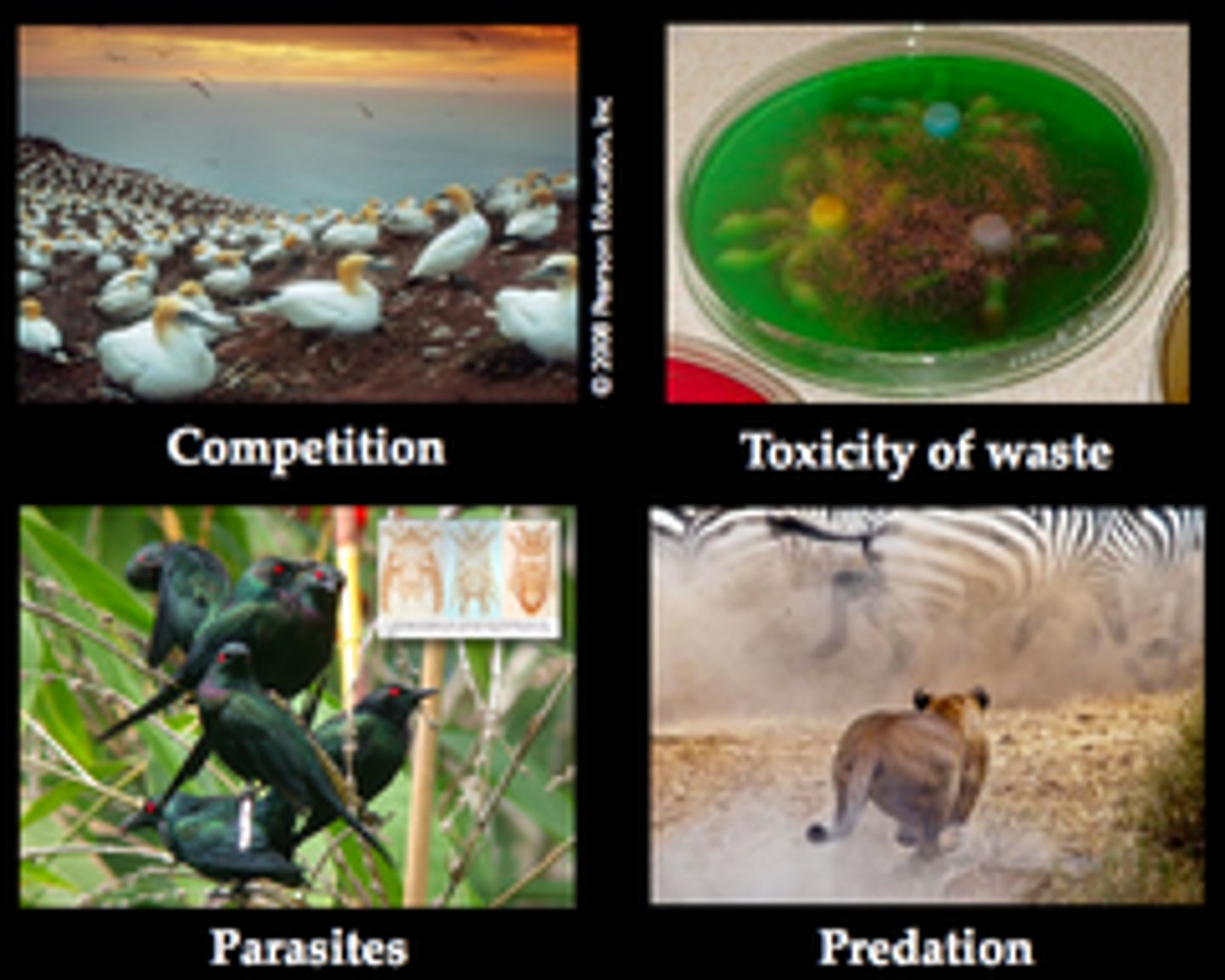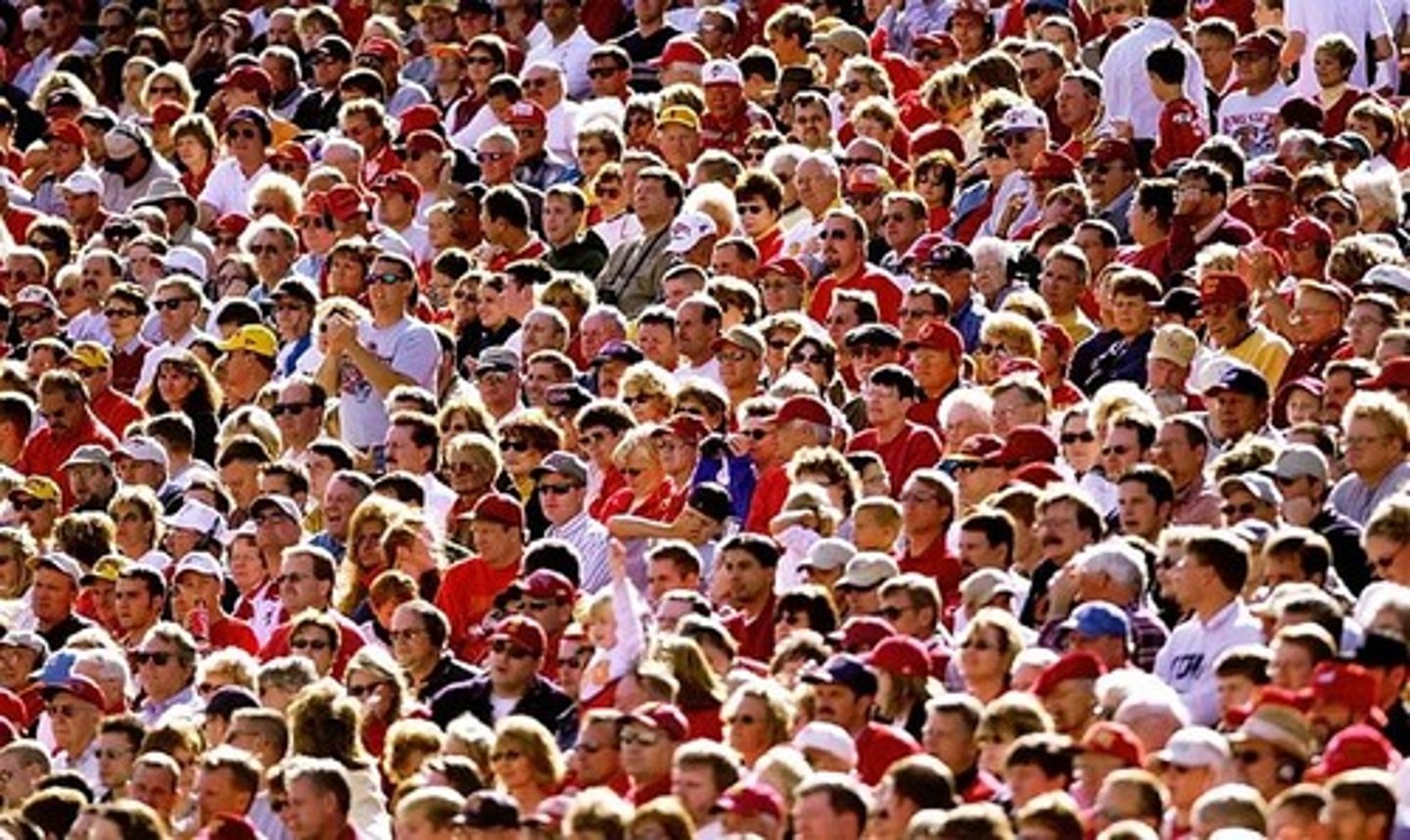02.0D BIO Communities & Ecosystem Dynamics - Limits to Growth (PART D)
1/7
There's no tags or description
Looks like no tags are added yet.
Name | Mastery | Learn | Test | Matching | Spaced |
|---|
No study sessions yet.
8 Terms
Limiting Factor
A factor that controls the growth of a population.
Examples include: competition, predation, parasitism, and disease

Density-Dependent Limiting Factors
Factors that operate strongly only when population density reaches a certain level. These factors do not affect small, scattered populations as much.
Examples include competition, predation, herbivory, parasitism, disease, and stress from overcrowding.

Competition
A density-dependent limiting factor. The more individuals living in an area, the sooner they use up the available resources and the more crowded so individuals compete with other organisms for food, water, space, sunlight, and other essentials.

Parasites and Disease Causing Organisms
Feed at the expense of their hosts, weakening them and often causing disease or death.
Density- Independent Factors
Factors that are NOT affected by population density. These factors affect all members of the population the same. Examples include: unusual weather, natural disasters, and certain human activities such as damming of rivers and clear-cutting forests.

Predation
A density dependent factor that limits population size when predators eat prey

Parasitism and Disease
A density dependent factor that limits population size when organisms are infected by a parasite or disease. The more individuals in an area the more like the parasite or disease will spread to the individuals nearby
Overcrowding
A density dependent factor that limits population size as a result of organisms becoming overcrowded which can cause high levels of stress, which can weaken the and organisms ability to resist disease, cause females to neglect, kill, or even eat their own offspring and lower birthrates, raise death rates, or both, and can also increase rates of emigration
